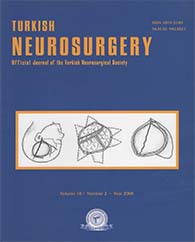METHODS: The subjects consisted of 13 consecutive patients (8 children, 5 adults) with moyamoya disease who were surgically treated between 2004 and 2007. The onset symptoms were ischemia (11 patients), hemorrhage (1 patient), or headache (1 patient). We performed modified standard encephalo-duro-arterial-synangiosis on 16 sides in the 8 children and superficial temporal artery-to-middle cerebral artery anastomosis with encephalo-duro-myo-synangiosis combining direct and indirect bypasses on 5 sides in the 5 adult patients.
RESULTS: Perioperative complications were noted in 12 (9 patients) of 21 operations (13 patients). Most complications were transient and no attributive lesions were detected on CT or MRI. The clinical outcome was excellent or good and revascularization was seen in cerebral blood flow studies. Effective neovascularization through the grafts was observed in follow-up angiography.
CONCLUSIONS: The surgical management of moyamoya disease has various aspects depending on the individual subject and very specific surgical management might be required.
Keywords : Bypass surgery, Cerebrovascular disease, Circle of Willis, Hemorrhage, Ischemia, Moyamoya disease, Stroke, Surgery




